Bipan Chandra Summary: Peasant Movements And Nationalism In The 1920s | PSIR Optional for UPSC PDF Download
Peasant Movements and Nationalism in the 1920s
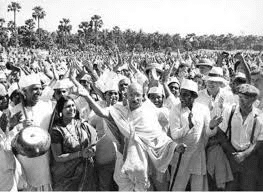
Peasant Discontent in Avadh
- After the annexation of Avadh in 1856, the power of large landlords (taluqdars) increased in the region.
- This led to severe exploitation of cultivators through:
- High rents
- Illegal levies
- Renewal fees (nazrana)
- Arbitrary evictions (bedakhli)
- The situation worsened during World War I due to rising prices of food and essentials, intensifying tenant suffering.
Formation of Kisan Sabhas
- Discontent among tenants made them receptive to resistance ideas.
- Active members of the Home Rule League in U.P. began organizing peasants into kisan sabhas using modern methods.
- The U.P. Kisan Sabha was founded in February 1918 by Gauri Shankar Misra and Indra Narain Dwivedi, with support from Madan Mohan Malaviya.
Growth and Participation
- The U.P. Kisan Sabha expanded rapidly, establishing 450 branches across 173 tehsils by June 1919.
- Many kisan delegates from U.P. participated in Indian National Congress sessions in December 1918 and 1919.
Grass-Roots Peasant Activity
- Late 1919 saw initial grassroots peasant activity, including social boycotts in Pratapgarh district.
- By summer 1920, village panchayat-organized kisan meetings became common in taluqdari Avadh, with leaders like Thinguri Singh and Durgapal Singh emerging.
- Baba Ramchandra, a key figure, unified peasants and showcased strong leadership.
Leadership of Baba Ramchandra
- Baba Ramchandra, a wanderer and sadhu from Maharashtra, settled in Faizabad, U.P. in 1909.
- He gained prominence by reciting verses from Tulsidas’ Ramayana to rural audiences.
- In mid-1920, he became a leader of peasants in Avadh, demonstrating strong organizational skills.
Meetings with Prominent Figures
- In June 1920, Baba Ramchandra led tenants to Allahabad to meet Gauri Shankar Misra and Jawaharlal Nehru.
- This prompted Nehru to visit rural areas and establish close ties with the Kisan Sabha movement.
Kisan Sabha Activities
- The Kisan Sabha in Roor village, Pratapgarh, became a central hub for tenant complaints, with around one lakh tenants registering their issues for a small fee.
- Gauri Shankar Misra worked on agreements with Deputy Commissioner Mehta regarding tenant issues like bedakhli and nazrana.
Taluqdar Opposition
- In August 1920, Mehta took leave, and taluqdars attacked the growing kisan movement.
- They falsely arrested Baba Ramchandra and thirty-two kisans on theft charges on August 28, 1920.
Escalation and Public Support
- Angered by the arrests, thousands of kisans gathered in Pratapgarh to demand their leaders' release, facing dispersal after persuasion.
- A rumour of Gandhiji coming to secure Baba Ramchandra's release attracted crowds of ten to twenty thousand.
Pratapgarh Movement
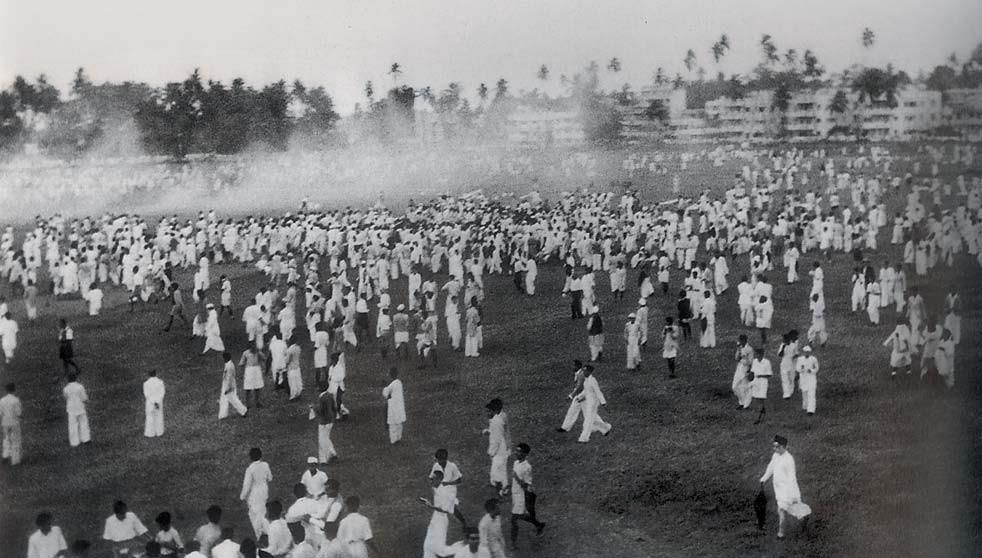
In Pratapgarh, thousands of kisaan gathered and refused to leave until they received darshan from Baba Ramchandra, who miraculously appeared from a tree in a sugarcane field. Their numbers swelled to sixty thousand, prompting authorities to take notice. Official Mehta was called back from leave to manage the situation. He quickly dropped a theft case against the kisaan and pressured landlords to change their actions. This easy victory boosted the kisaan's confidence.
Meanwhile, the Congress in Calcutta chose the path of non-cooperation, influencing many nationalists in U.P. to follow suit. However, some leaders, like Madan Mohan Malaviya, preferred to stick with constitutional methods. These differing opinions were reflected in the U.P. Kisaan Sabha. Shortly after, the non-cooperators established an alternative Oudh Kisaan Sabha in Pratapgarh on 17 October 1920.
Growth of the Oudh Kisaan Sabha
- The Oudh Kisaan Sabha successfully united numerous grassroots kisaan sabhas that had emerged in the Avadh districts over the past few months.
- Through the efforts of Misra, Jawaharlal Nehru, Mata Badal Pande, Baba Ramchandra, Deo Narayan Pande, and Kedar Nath, over 330 kisaan sabhas were incorporated by the end of October.
- The Oudh Kisaan Sabha urged kisaan to:
- Refuse to cultivate bedakhli land.
- Not provide hari and begar (types of unpaid labour).
- Boycott those who did not accept these demands.
- Resolve disputes through panchayats.
First Show of Strength
- The first significant demonstration of strength by the Sabha was a rally in Ayodhya near Faizabad on 20 and 21 December, attracting around 100,000 peasants.
- At this event, Baba Ramchandra appeared bound in ropes to symbolise the oppression faced by the kisaan.
- Notably, the Kisaan Sabha movement included members from both high and low castes.
Change in Peasant Activity
In January 1921, the nature of peasant activities changed significantly, shifting focus to the districts of Rae Bareli, Faizabad, and, to a lesser extent, Sultanpur. The activities included:
- Looting of bazaars, homes, and granaries.
- Clashes with the police.
- Many incidents were sparked by the arrests or rumours of arrests of leaders.
These actions were often led by local figures—sadhus, holy men, and dispossessed former landowners—rather than recognised Kisaan Sabha activists. The Government found it relatively easy to suppress these violent outbreaks. Crowds were dispersed with gunfire, leaders were arrested, and legal actions were initiated. Apart from a few incidents in February and March, the movement was largely subdued by the end of January.
In March, the Seditious Meetings Act of 1911 was enforced in affected districts, halting all political activity. Nationalists continued to defend tenant rights in court but could do little else. Meanwhile, the Government enacted the Oudh Rent (Amendment) Act, which provided minimal relief to tenants but did help rekindle some hope, contributing to the movement's decline.
Resurgence of Peasant Discontent
By the end of the year, peasant dissatisfaction re-emerged in Avadh, especially in the districts of Hardoi, Bahraich, and Sitapur in the north. The initial push came from Congress and Khilafat leaders, leading to the rise of the Eka or unity movement. Key grievances included:
- Rent demands that were often fifty per cent higher than recorded rents.
- Oppression from thekedars tasked with rent collection.
- Unfair share-rent practices.
Eka meetings involved a religious ritual where a hole representing the river Ganges was dug and filled with water. A priest presided, and the kisaan pledged to:
- Pay only the recorded rent on time.
- Not leave when evicted.
- Refuse forced labour.
- Not assist criminals.
- Follow panchayat decisions.
However, the Eka Movement soon developed its own grassroots leadership, including Madari Pasi and other low-caste leaders, who were less inclined to adhere to the non-violent approach promoted by Congress and Khilafat leaders.
Brief Background of the Peasant Movement
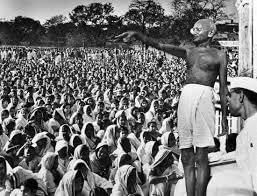
- The Eka Movement, which emerged in the early 1920s, was distinct from the earlier Kisan Sabha movement in its inclusivity. While the Kisan Sabha primarily focused on tenant issues, the Eka Movement attracted a diverse group, including small zamindars who were frustrated with the government’s heavy land revenue demands.
- The movement initially found common ground with nationalists but eventually charted its own course. However, by March 1922, the authorities’ severe repression brought the Eka Movement to a halt.
Malabar District Uprising
- Peasant discontent in August 1921 in the Malabar district of Kerala saw Mappila (Muslim) tenants rebelling against their landlords.
- The tenants’ grievances included issues like lack of security of tenure, high renewal fees, exorbitant rents, and other oppressive demands from landlords.
- Although there had been resistance in the past, the scale of the uprising in 1921 was unprecedented.
Trigger for Resistance
- The resistance was ignited by the Malabar District Congress Conference in April 1920, which advocated for regulating landlord-tenant relations and supported the tenants’ cause.
- This shift was crucial as it marked a departure from previous instances where landlords had obstructed Congress support for tenants.
- Following the conference, tenants’ associations began forming in Kozhikode and other areas of the district.
Interconnection with Khilafat Movement
- The Khilafat Movement was gaining momentum simultaneously, with little distinction between its meetings and those of the tenants’ agitation.
- The leadership and audience were often the same, and while the movement was predominantly among Mappila tenants, some Hindu leaders also participated.
Government Repression
- Disturbed by the rising popularity of the combined Khilafat and tenant agitation, which was further strengthened by visits from prominent figures like Gandhiji, Shaukat Ali, and Maulana Azad, the government began to crack down.
- On February 5, 1921, prohibitory notices on Khilafat meetings were issued, and by February 18, key Khilafat and Congress leaders were arrested.
- These actions led to local Mappila leaders stepping up and taking charge of the agitation.
Outbreak of Rebellion
- The rebellion was sparked on August 20, 1921, when a raid on a mosque to arrest Ali Musaliar by the District Magistrate triggered outrage.
- Although only minor Khilafat volunteers were found and arrested, the news of the raid spread quickly, mobilizing Mappilas from various areas to Tirurangadi to demand the release of those detained.
- When the police opened fire on the peaceful protest, causing casualties, it escalated into violent clashes.
Initial Phase of Rebellion
- In the early stages, the rebels primarily targeted unpopular jammies (landlords), mostly of Hindu background, along with symbols of government authority such as kutcheris (courts), police stations, and treasuries, as well as British planters.
- Lenient landlords and impoverished Hindus were generally spared from harm.
- The rebels specifically made efforts to avoid attacking Hindus and punished those who did, with figures like Kunhammed Haji ensuring that Hindus were not harmed and addressing pro-government Mappilas.
Shift After Martial Law
- However, once the British declared martial law, the nature of the rebellion underwent a significant transformation.
Definitive Change:
- Many Hindus were either coerced into aiding the authorities or chose to assist willingly.
- This situation intensified anti-Hindu sentiment among the impoverished, uneducated Mappilas, who were already fueled by strong religious ideology.
- Forced conversions, assaults, and killings of Hindus escalated as desperation mounted.
- The movement began as anti-government and anti-landlord but adopted communal characteristics over time.
- The Mappilas' resort to violence alienated them from the Non-Cooperation Movement, which promoted non-violence.
- The communal aspect of the rebellion led to the complete isolation of the Mappilas.
- British repression compounded the situation, and by December 1921, all resistance had dissipated.
- Casualties were high: 2,337 Mappilas died (official) and over 10,000 (unofficial estimates).
- 45,404 rebels were captured or surrendered.
- The Mappilas were so subdued and demoralized that they refrained from engaging in political activity until independence.
- They did not participate in the national movement or the peasant movement under Left leadership in Kerala.
Peasant Movements:
- Peasant movements in U.P. and Malabar were closely linked to national politics.
- In U.P., the Home Rule Leagues and later the Non-Cooperation and Khilafat movements provided the impetus.
- In Avadh (early 1921), peasant activity was at its peak, and Non-Cooperation meetings blended with peasant rallies.
- Similarly, Khilafat and tenant meetings blended in Malabar.
- The violence used by peasants created a rift with the national movement.
- Nationalist leaders, like Gandhiji, discouraged peasants from resorting to violence.
- Leaders advised against extreme actions such as halting rent payments to landlords.
- This divergence was seen as a sign of apprehension from middle-class leadership that radical leaders might take control of the movement.
- National leaders' calls for restraint could have been due to concern for landlords and the affluent classes.
- Another motivation was to shield peasants from government repression, which followed the violent uprisings in U.P. and Malabar.
- Peasants did not seek the abolition of rent or landlordism but wanted to prevent illegal evictions, excessive levies, and high rents.
- National leaders supported these demands, but extreme measures like refusing to pay rent could push small landlords closer to the government.
No-Tax Movement:
- The No-Tax movement originated in Bardoli taluq, Surat district, Gujarat, in 1928.
- It can be seen as a continuation of the Non-Cooperation era.
- Bardoli was initially chosen in 1922 for Gandhiji's civil disobedience campaign, which was halted after the Chauri Chaura incident.
- Despite this, Bardoli underwent significant political awakening, leading to increased awareness of local political issues.
- Local leaders like Kalyanji and Kunverji Mehta, and Dayalji Desai, played a crucial role in spreading Non-Cooperation principles.
Social Reform and Political Activism in the District
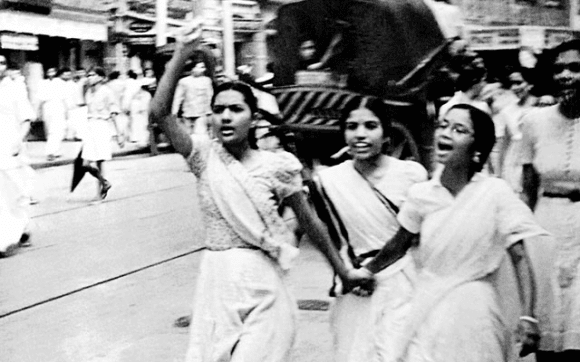
- Pre-Non-Cooperation Efforts: Local leaders, prior to the Non-Cooperation Movement, were actively involved in establishing national schools and encouraging students to leave government institutions.
- They also promoted the boycott of foreign cloth and liquor and successfully gained control of the Surat municipality.
Post-Non-Cooperation Initiatives: After the Non-Cooperation Movement, the Bardoli Congressmen shifted their focus to significant constructive work. Following Gandhiji's criticism in 1922 regarding their lack of efforts for the upliftment of the low-caste untouchables and tribal people, high-caste individuals began working among them, as the Kaliparaj (dark people) constituted sixty per cent of the taluq's population.
Initiatives for Kaliparaj
- They established a network of six ashrams across the taluq, many of which continue to operate today, focusing on tribal education.
- This effort significantly improved the morale of the taluq post-1922.
- Creation of Kaliparaj Literature: Kunverji Mehta and Keshavji Ganeshji, by learning the local tribal dialect, created 'Kaliparaj literature' with the help of educated community members.
- Motivational Literature: This literature, comprising poems and prose, motivated the Kaliparaj to challenge the Hali system, which forced them into hereditary labour for upper-caste landowners.
- Health and Financial Recommendations: The literature also encouraged the community to avoid drinking and excessive marriage costs, which often led to financial difficulties.
- Formation of Bhajan Mandalis: Kaliparaj and Ujaliparaj members formed Bhajan mandalis to disseminate these messages.
- Educational Initiatives: Night schools were set up for Kaliparaj education, and a school for Kaliparaj children was opened in Bardoli town in 1927.
- Resistance from Upper-Caste Landowners: Ashram workers faced hostility from upper-caste landowners who feared these initiatives would disrupt their labour system.
Annual Kaliparaj Conferences: Annual conferences for the Kaliparaj were held, gaining prominence over time.
- Gandhiji's Involvement: In 1927, Gandhiji presided over the annual conference, initiating an inquiry into the conditions faced by the Kaliparaj, renaming them Raniparaj (inhabitants of the forest) to replace the derogatory Kaliparaj.
- Inquiry Findings: Prominent figures from Gujarat conducted the inquiry, condemning the Hali system and highlighting the exploitation by moneylenders and upper-caste sexual exploitation of women.
- Consequent Support: The findings garnered strong support for the Congress from the Kaliparaj community.
- Rebuilding Influence: Concurrently, ashram workers continued engaging with landowning peasants, gradually regaining influence among them.
Land Revenue Assessment Controversy: In January 1926, news surfaced that Jayakar proposed a thirty per cent increase in land revenue assessment, prompting swift protests from Congress leaders.
- Formation of Bardoli Inquiry Committee: The Bardoli Inquiry Committee was formed to investigate the proposed increase.
- Committee Findings: The committee's report, released in July 1926, deemed the increase unjustified, leading to a campaign in the Press, particularly by Young India and Navjivan, both edited by Gandhiji.
- Legislative Support: Constitutionalist leaders, including Legislative Council members, supported the cause.
- Government Response: In July 1927, the Government reduced the increase to 21.97 per cent, although the concessions were considered minimal and tardy.
- Peasant Guidance: Constitutionalist leaders advised peasants to pay only the original amount, while the 'Ashram' group argued for withholding the entire amount to exert pressure on the Government.
- Shift in Peasant Leadership: As the limitations of the constitutionalist leadership became apparent, peasants gradually shifted towards the 'Ashram' group's leadership.
Vallabhbhai Patel's Involvement: During this transitional phase, leaders contacted Vallabhbhai Patel, urging him to take charge of the movement.
- Formal Invitation:. gathering of representatives from sixty villages in the Bamni area formally invited Vallabhbhai Patel to lead the campaign, marking a significant turn in the leadership of the movement.
Local Leaders' Assurance to Gandhiji
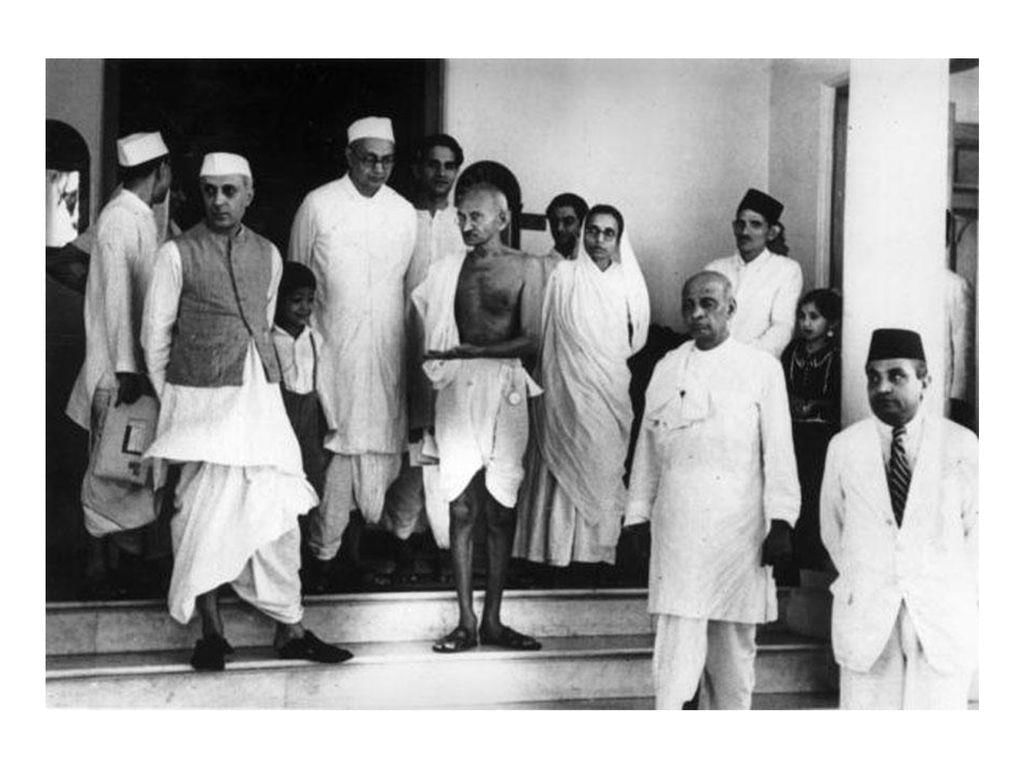
Local leaders reassured Gandhiji that the peasants were fully aware of the campaign's implications, securing his support for the movement.
Arrival of Patel in Bardoli
Patel arrived in Bardoli on 4 February 1928 and held discussions with both peasants and constitutional leaders. During one meeting, moderate leaders acknowledged the failure of their current methods and proposed trying Vallabhbhai's approach. Vallabhbhai explained the potential consequences of their actions and advised them to reconsider for a week. He then returned to Ahmedabad and wrote to the Governor of Bombay, highlighting errors in the settlement report and requesting an independent inquiry. He warned that without this, he would have to advise peasants to stop paying land revenue and face the consequences.
Peasants' Resolution
On 12 February, Patel returned to Bardoli and informed the peasants' representatives about the situation, including the government's curt response. A meeting of land occupants passed a resolution advising all landholders to withhold payment of the revised assessment until the government either appointed an independent tribunal or accepted the current amount as full payment. Peasants took oaths in the names of Prabhu (Hindu term for God) and Khuda (Muslim term for God) to refuse payment of land revenue. Sacred texts from the Gita and the Koran were recited, along with songs from Kabir, symbolising Hindu-Muslim unity. The Satyagraha had commenced.
Vallabhbhai Patel's Leadership
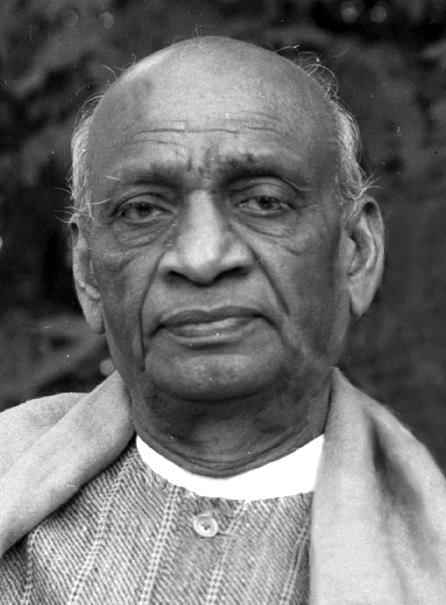
Vallabhbhai Patel was an ideal leader for the campaign, drawing from his experience in the Kheda Satyagraha, Nagpur Flag Satyagraha, and Borsad Punitive Tax Satyagraha. He had risen to prominence in Gujarat, just behind Gandhiji, known for his organisational skills, oratory, and relentless campaigning. The women of Bardoli honoured him with the title of Sardar, and his impactful speeches left a lasting impression on the peasants.
Organising the Movement
The Sardar divided the taluq into thirteen workers' camps or Chhavanis, each led by an experienced leader. One hundred political workers from across the province, along with 1,500 volunteers, many being students, made up the movement's workforce. A publications bureau produced the daily Bardoli Satyagraha Patrika, which included reports on the movement, leaders' speeches, images of confiscation proceedings, and other news. Volunteers distributed this information throughout the taluq. The movement also had an intelligence unit that tracked undecided peasants and collected information on government actions, particularly regarding confiscations, to warn villagers to secure their homes or flee to nearby Baroda.
Mobilisation Strategies
Mobilisation was achieved through extensive propaganda, including meetings, speeches, pamphlets, and door-to-door persuasion. Women were particularly mobilised by activists like Mithuben Petit, Bhaktiba, Maniben Patel, Shardaben Shah, and Sharda Mehta, often outnumbering men at meetings and remaining steadfast against government threats. Students were encouraged to persuade their families to resist.
Social Pressure Tactics
Individuals showing weakness faced social pressure and boycott threats, with caste and village panchayats playing crucial roles. Opponents risked losing essential services and social ostracism. Government officials were also pressured by denying them supplies, services, and transport, hindering their duties.
The Bardoli Satyagraha
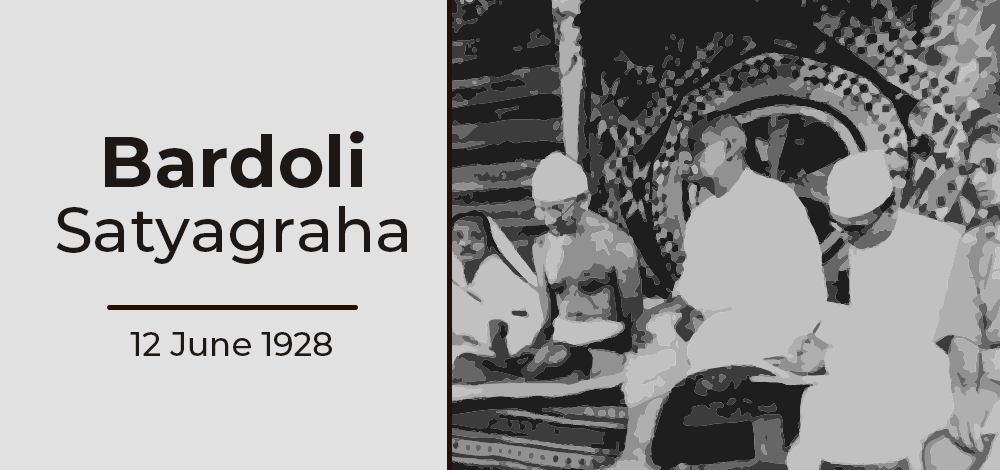
The efforts of the Kaliparaj people were advantageous during this movement, and the Government's attempts to use them against the upper-caste peasants were entirely unsuccessful.
Sardar Patel and his team worked diligently to secure the support of constitutional and moderate leadership, as well as public opinion, on all critical issues. As a result, the Government soon found its supporters and neutral parties abandoning its cause.
- Many members of the Bombay Legislative Council, such as K.M. Munshi and Laiji Naranji, who represented the Indian Merchants Chamber and were moderate rather than extreme, resigned from their positions.
- By July 1928, Lord Irwin, the Viceroy, started to question the Bombay Government's stance and pressured Governor Wilson to seek a way out.
- Discomforting questions began to arise in the British Parliament as well.
- Public sentiment in the country was increasingly restless and against the Government.
- Peasants in various parts of the Bombay Presidency threatened to protest for the revision of revenue assessments.
- Workers at Bombay textile mills were on strike, and there was a risk that Patel and the Bombay Communists would join forces to initiate a railway strike, obstructing troop and supply movements to Bardoli.
- The Bombay Youth League and other organisations mobilised the people for large public meetings and demonstrations.
- Punjab was prepared to send groups on foot to Bardoli.
- Gandhiji moved to Bardoli on 2 August 1928 to take charge of the movement if Patel was arrested.
Overall, a retreat that could be disguised as a face-saving measure appeared to be the best option for the Government.
The Legislative Council members from Surat provided a face-saving measure by writing a letter to the Governor, assuring him that his pre-condition for an enquiry would be met. The letter did not mention what the pre-condition was (though everyone knew it involved full payment of the increased rent) because an agreement had already been reached not to pay the full increased rent. Nobody took the Governor seriously when he claimed he had achieved an ‘unconditional surrender.’ It was the Bardoli peasants who emerged victorious.
The enquiry, led by a judicial officer, Broomfield, and a revenue officer, Maxwell, concluded that the rent increase had been unjustified and reduced it to 6.03 per cent. The New Statesman of London highlighted the significance of the report on 5 May 1929, stating it was a major rebuff for local government in India with potential far-reaching consequences.
Connection between Bardoli and Freedom Struggle
Gandhiji explained the link between the Bardoli movement and the broader fight for freedom, emphasizing that while Bardoli was not a direct struggle for Swaraj, such efforts would ultimately bring Swaraj closer, possibly even more than direct actions.
|
173 videos|574 docs|148 tests
|
FAQs on Bipan Chandra Summary: Peasant Movements And Nationalism In The 1920s - PSIR Optional for UPSC
| 1. What were the main causes of peasant movements in India during the 1920s? |  |
| 2. How did the Pratapgarh Movement contribute to the larger peasant movement in India? |  |
| 3. What role did Vallabhbhai Patel play in the Bardoli movement, and why is it significant? |  |
| 4. What were the mobilization strategies employed by leaders during the peasant movements in the 1920s? |  |
| 5. How did social reforms intersect with political activism in the peasant movements of the 1920s? |  |



















